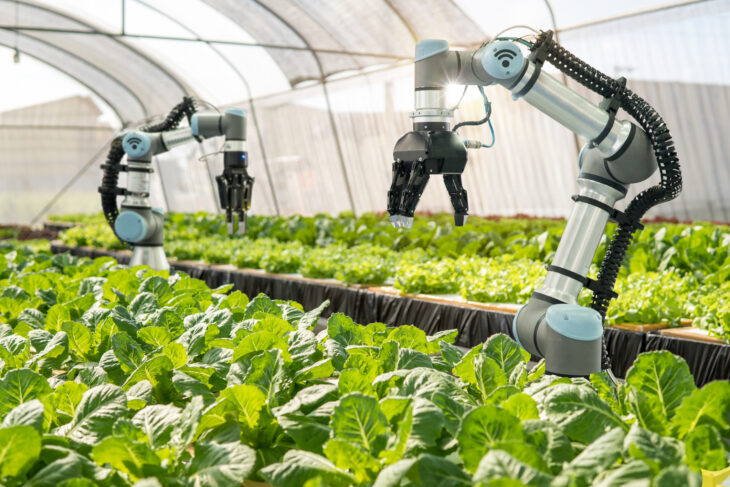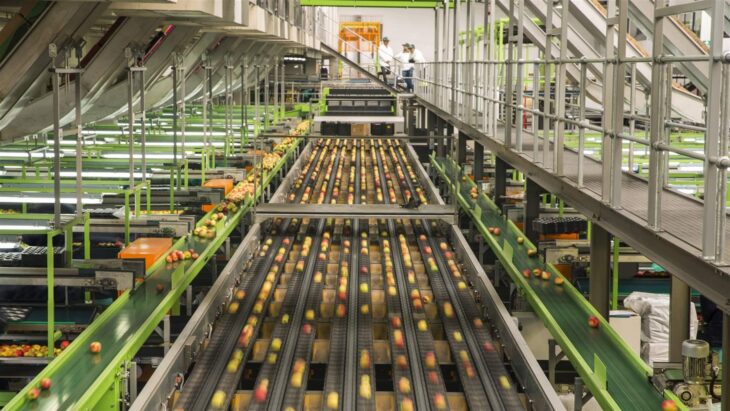Irrespective of the size of your business or the type of food and beverage you are producing, the right key to running a business that is a source of success in the food industry lies in the type of motors and engines you can use to make it better.
Every type of industrial plant has its own challenges. They require the establishment and the construction of multiple and several plants at the same time, while also ensuring the maximum safety for all the workers involved in the construction and the safety of the facilities used for the project. However, the challenges are a little bit more complicated when it comes to the food industries. The very nature of the products demands and requires a very high level of hygiene control in order to prevent microbial contamination and the consequent growthof bacteria; the surface of the motors must always be easy to clean and highly resistant to aggressive agents, disinfectants, high-temperature and high-pressure water jets, all necessary for the sanitization of food processing plants. There is also the absolute need to ensure and guarantee food safety, without any disruption to the continuous process of food productions. Therefore, it is paramount and essential that you equip yourself with the appropriate and adequate machinery, and power them up with the right set of electric motors.
Unlike the traditional motors, an electric motor is a motor that converts electrical energy into mechanical energy, powering different kinds of industrial machinery and tools, enabling them to perform their designated tasks. Several types of electric motors are available, classified by their power source type (Alternating Current, such as electrical generators, inverters, or power grids, or Direct Current, including batteries, motor vehicles, or rectifiers), the type of motion output, their internal construction, or their applications; each type of electric motor has its specific characteristics, which answer to the different needs of the various kinds of industrial plants. For example, petrochemical industry operates in hazardous environments, so the perfect fit for this kind of industry is an ATEX-certified Ex-Proof motor; while steel plants require a robust set up to maintain the continuity of their production process in a heavily warm environment, requirement which can be fulfilled by a specialized motor for conveyor belts; and so on.
They are free from oil spills, make little to no noises, yet provides more than enough power for a smooth operation of your food processing and preservations equipment. They are easy to maintain and highly efficient to operate, offering an abundance of opportunity to maximize profit in a futuristic way. There are also a great number of options available satisfying many different needs of various industries including mining, sugar refineries, oil rigs, cement and steel mills, etc. For more information on the different types of electric motors and their applications, please visit omemotors.com.
Electric Motors for Food Production

Source: techcrunch
Whether you are roasting coffee beans, producing baked goods, or brewing some kind of drinks; you would need a host of machinery to smoothly run your operations. But how to power up those kinds of machinery and ensure they run continuously at their maximum level? The answer lies in the installation of the right type of electric motors: brushless DC motors and brushless DC gear motors are more and more used, because they provide a long service life and high efficiency; another type of motor used in food processing industry are AC gear motors, which provide increased efficiency, greater output speed and better overall performance. Some of the food and beverage industrial activities that frequently use electric motors are meat and poultry processing, ready-to-eat food processing, fresh produce processing, dairy, ice cream, and frozen food applications, deep-frying and kettle cooking applications, soft drinks production, malting, and distilling. Depending on your needs, you can opt for low-voltage standard motors, powerful three-phase electric motors, asynchronous and synchronous motors, etc. If you have custom-built food transferring belts or something similar, you can also arrange for the production of customized electric motors, that will allow you to avoid unnecessary costs by only including the features that your customized machinery needs.
The low-voltage motors are highly efficient, performing a wide variety of tasks with minimal maintenance efforts; they are also widely known as IEC motors, for meeting the standards set by the International Electrotechnical Commission. Whereas the three-phased electric motors are ruggedly built to produce an enormous amount of power. The ruggedness also helps these motors to withstand the dusty conditions of industrial fans, ventilation equipment, and such. Another type of electric motor that is successfully used in food processing industry is the Permanent Magnet Motor, that is special synchronous electric motors with magnetic bars, which increase the thrust, making these motors more efficient in terms of performance and energy savings; in addition, permanent magnet motors usually have low weight and volume, resulting in high-performance, space-saving devices.
Electric Motors for Food Preservation

Source: pewtrusts
For obvious reasons, the importance of having perfect food preservation and drinks refrigeration unit is paramount to almost every food-related industry. Thanks to the use of electric motors in compressors (that compress a refrigerant which is then used to extract the heat of the products to be refrigerated), you may readily opt for refrigeration systems that are powered by electric motors. For food plants with specific needs, you can also take advantage of the customization option offered by companies like OME motors. As they don’t make many noises and can operate continuously in a highly combustible environment; they are not only great for efficiency and effectiveness but also great for the environmental health of your establishments, reducing carbon emissions.
